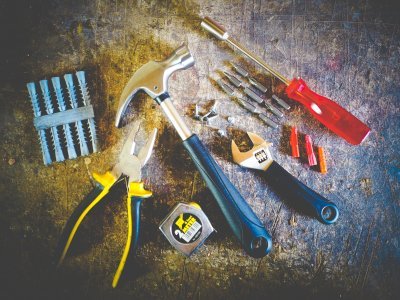Installing a dishwasher for the first time can seem like a daunting task, but with the right guidance, it becomes a manageable and rewarding DIY project. Whether you’re upgrading your kitchen appliances or embarking on a home improvement journey, this step-by-step guide will walk you through the process, ensuring a successful installation.
Table of Contents
Tools and Materials Needed for Dishwasher Installation
Before diving into the installation process, gather the necessary tools and materials. You’ll need an adjustable wrench, screwdrivers, pliers, a level, and safety gear like gloves and safety glasses. Additionally, make sure you have the new dishwasher, installation manual, and any required fittings.

Choosing the Right Dishwasher
Selecting the right dishwasher is crucial. Consider the size that fits your kitchen space, the capacity to meet your household needs, and the energy efficiency to save on utility costs. Research different brands and models to find the one that aligns with your preferences and requirements.
Preparing the Space
Measure the space where the dishwasher will be installed. Ensure there’s enough room for the unit and consider the proximity to plumbing and electrical outlets. Make any necessary adjustments to the cabinetry or countertop to accommodate the new dishwasher.
Turning off Utilities
Safety first! Before starting the installation, turn off the water supply and electricity to the kitchen. This prevents accidents and ensures a secure working environment. Double-check that both utilities are completely shut off before proceeding.
Removing the Old Dishwasher
If you’re replacing an existing dishwasher, disconnect and remove it carefully. Follow the manufacturer’s instructions for proper removal. Consider recycling or disposing of the old unit responsibly.
Installing Water Supply Lines
Connect the dishwasher to the water source using the appropriate fittings. Check for leaks and ensure a tight connection. Properly secure the water supply line to prevent any issues during operation.
Setting Up the Drainage
Install the dishwasher drain line, ensuring it is correctly connected to the kitchen sink’s drainage system. A secure and proper connection prevents water backups and maintains optimal performance.
Electrical Connections
Carefully wire the dishwasher to the power source according to the provided instructions. If you’re not comfortable with electrical work, consult a professional to ensure safety and compliance with local regulations.
Securing the Dishwasher
Adjust the leveling legs to ensure the dishwasher is stable and level. Securing the unit prevents movement during operation, reducing the risk of damage and improving overall efficiency.
Testing for Leaks
Run a test cycle to check for water leaks. Monitor the entire process and inspect for any signs of leakage. Address any issues promptly to avoid water damage to your kitchen.
Adding Detergent and Rinse Aid
Follow the manufacturer’s guidelines for adding dishwasher detergent. Additionally, use rinse aid for better drying performance. Using the right products in the correct amounts enhances the dishwasher’s effectiveness.
Understanding Dishwasher Settings
Familiarize yourself with the different wash cycles and options your dishwasher offers. This knowledge allows you to tailor each cycle to your specific needs, maximizing efficiency and ensuring optimal results.
Maintenance Tips
Regularly clean and maintain your dishwasher to prolong its lifespan. Follow the maintenance recommendations in the manual and troubleshoot common issues promptly. This proactive approach keeps your dishwasher running smoothly.
Conclusion
Congratulations! You’ve successfully installed your dishwasher for the first time. By following this comprehensive guide, you’ve not only saved on installation costs but also gained a valuable skill. Enjoy the convenience and efficiency of your newly installed dishwasher.
FAQs
- Q: Can I install a dishwasher without professional help?
- A: Absolutely! This guide provides step-by-step instructions to make the process manageable for DIY enthusiasts.
- Q: What if I encounter issues during installation?
- A: Consult the dishwasher manual for troubleshooting tips or seek assistance from a professional if needed.
- Q: Do I need special tools for dishwasher installation?
- A: Basic tools like a wrench, screwdrivers, and pliers are sufficient. Follow the manufacturer’s recommendations.
- Q: How often should I clean my dishwasher?
- A: Regular cleaning, ideally once a month, helps maintain optimal performance and prevents unpleasant odors.
- Q: Can I install a dishwasher in any kitchen layout?
- A: Consider the space and proximity to utilities. Make adjustments if necessary, and choose a dishwasher that fits your kitchen layout.

Pingback: Do You Hook Your Dishwasher to Hot or Cold Water: A Comprehensive Guide 2024